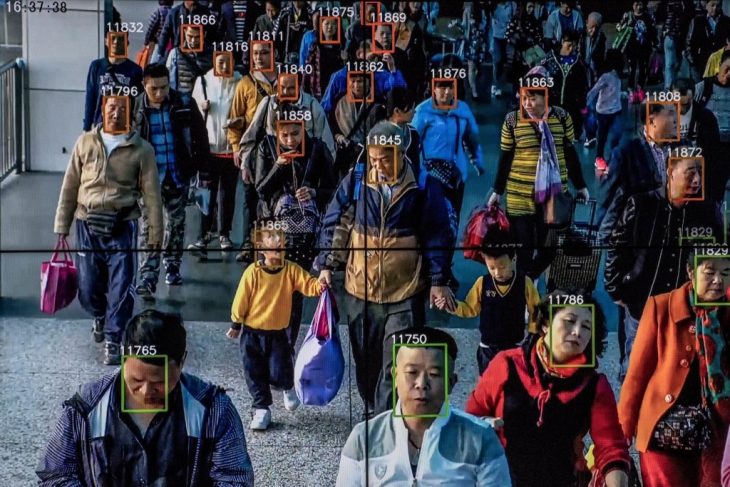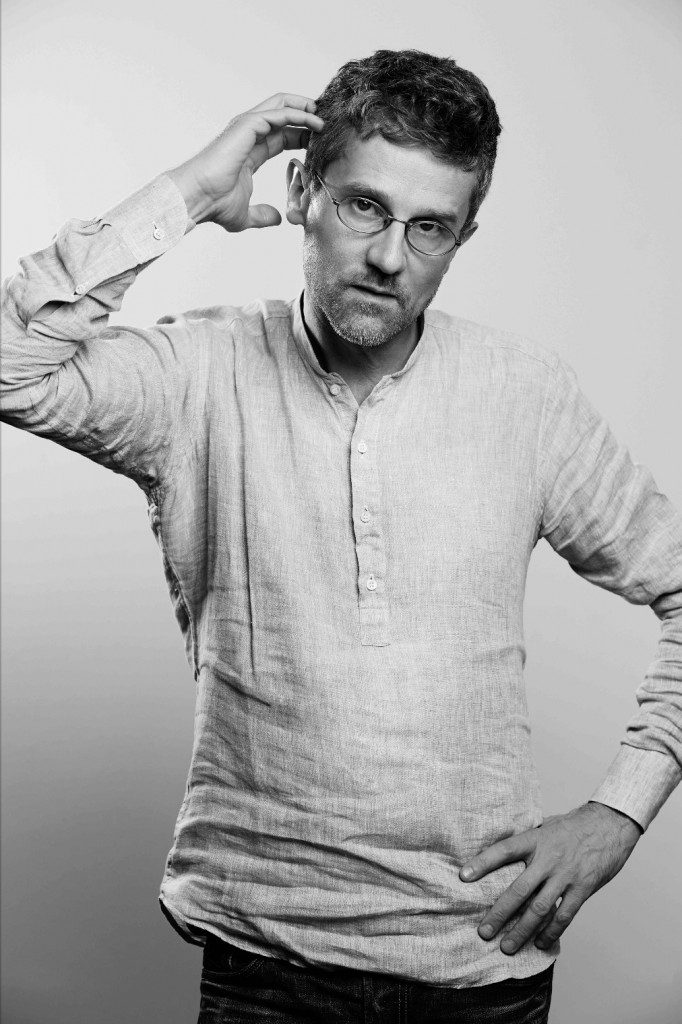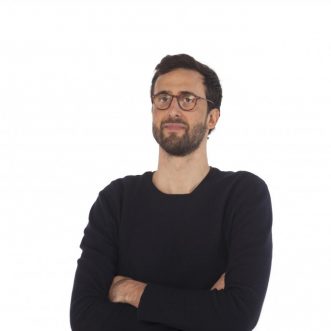Master in City & Technology – Term 3
Workshop Name: The Eyes of the City
Total Hours: 15 hours
Faculty: Carlo Ratti, Federico Riches, Alberto Benetti
Reflecting on unprecedented scenarios where the built environment is acquiring the ability to sense and react to users in real time.
MaCT Internet of People Workshop // Carlo Ratti

Credits: Gilles Sabrie for The New York Times
Syllabus
The last two decades have witnessed an increasing penetration of digital technologies in the physical space – a phenomenon often described as the emergence of the Internet of Things. This ushered in a series of radical changes in how we conceive, design and live the city. More recently, with particular prominence in China, technological advancements such as AI and facial recognition have been accelerating a process by which the built environment is becoming more and more able to sense people’s needs in real time. We are now reaching an unprecedented scenario, whereby architectural space is acquiring the ability to ‘see’: it can potentially recognize us and autonomously react to our presence. What can the consequences of this new scenario be on urban life?
While face recognition systems have been around since the 1960s, recent advancements in the technology’s accuracy and adaptability have led to new applications in both the public and private sector. From the iPhone X’s facial recognition authentication system[1] to Google’s Arts & Culture “museum doppelganger” app that pairs your selfie with the portrait you most resemble[2], such application point to a brighter future where facial recognition can simplify access to buildings, resources, and services.
Nevertheless, the technology remains a point of contention, especially when it comes to privacy issues and government surveillance programs. A recent partnership between Rekognition (Amazon’s facial recognition technology) and police departments in Orlando and Oregon’s Washington County drew widespread condemnation from the American Civil Liberties Union who published an open letter to Amazon CEO Jeff Bezos demanding that Amazon stop supplying government and law enforcement agencies with facial recognition technology[3]. Researchers at Carnegie Mellon University have even designed eyeglasses to trick facial recognition systems into misidentifying faces.[4]
The workshop responds to an open call for contributions to the 2019 Shenzhen Biennale whose curatorial statement, the Eyes of the City, explores the paradigm shift from inanimate architecture to a built environment that is quickly acquiring the ability to see and react to users in real time. Working in teams, we will develop concepts for new products and services that leverage on face recognition technology. Participants are free to interpret the debate on facial recognition and privacy as they see ?t but should be ready to defend their position …
Faculty

An architect and engineer by training, Professor Carlo Ratti teaches at MIT, where he directs the Senseable City Laboratory and is a founding partner of the international design and innovation practice Carlo Ratti Associati. A leading voice in the debate on new technologies’ impact on urban life, his work has been exhibited in several venues worldwide, including the Venice Biennale, New York’s MoMA, London’s Science Museum, and Barcelona’s Design Museum. Two of his projects – the Digital Water Pavilion and the Copenhagen Wheel – were hailed by Time Magazine as ‘Best Inventions of the Year’. He has been included in Wired Magazine’s ‘Smart List: 50 people who will change the world’. He is currently serving as co-chair of the World Economic Forum’s Global Future Council on Cities and Urbanization, and as special advisor on Urban Innovation to the European Commission.

Federico Riches is an architect graduated cum laude from TU Delft in January 2017 with a thesis exploring new industrial paradigms in response to current social, economic and technological disruptions. Through his Bachelor, he developed a strong interest in modular architecture which he deepened in professional experiences at Tempohousing in Amsterdam in 2013 and LOT-EK in New York in 2014. While at TU Delft, Federico was a board member of BouT student association and worked as a research assistant for the Urbanism department. More recently Federico has developed an interest in spatial data science that he is now strengthening with a GIS & Design course at Pratt.
He joined CRA in April 2017 and is currently directing CRA’s data visualization department.

Alberto Benetti graduated in Architecture and Building Engineering from the University of Trento in 2017 with a focus on the potential of new technologies and open-source strategies in the urban context. His master thesis “HE.RE. – a kit for temporary reactivation of urban vacancies” developed a prototype of software to map underused buildings by using heterogeneous sets of data to direct the installation of a network of sensing urban devices able to temporarily reactivate these buildings by creating new active public spaces for open-source strategies. Since 2016, his research has been awarded by the IEEE Smart Cities Initiative and has been presented most recently – among other occasions – at the IAAC Responsive Cities Symposium in Barcelona. After having attended the first semester of the Mario Cucinella’s School of Sustainability, he joined CRA in January 2018 as an architect.
Course Structure
Wednesday, May 22nd, 2019
12.00 – 14.30 Introduction: Topic, Site, and Schedule
14:30 – 17:00 Define: Working Session with Desk Reviews
19.00 – 19.30 Welcome/Registration
19:30 – 20:15 Public Lecture by Carlo Ratti: The Eyes of the City
20:15 – 20:30 Q&A
—————-
Thursday, May 23rd, 2019
12:30 – 14:00 Pin-Up: Review problem definitions and proposed solutions
14:30 – 17:00 Design: Working Session with Desk Reviews
—————-
Friday, May 24rd, 2019
12:00 – 15:00 Deliver: Working Session with Desk Reviews
15:00 – 17:00 Concept Pitches with Guest Critics
Exercise
Brief: The workshop responds to an open call for contributions to the 2019 Shenzhen Biennale whose curatorial statement, the Eyes of the City, explores the paradigm shi from inanimate architecture to a built environment that is quickly acquiring the ability to see and react to users in real me.
Task: Working in teams, we will develop concepts for new products and services that leverage face recognition technology.
Hardware / Software requirements
The seminar will use:
- Adobe Creative Suite: Photoshop, Illustrator, InDesign, Premiere, After Effects
- QGIS, Grasshopper, Python, SQL, HTML, CSS and Javascript
Deliverables
-
- Title (15 words maximum): Title and a short slogan describing the project
- Abstract (200 words maximum): A short abstract describing the main idea behind the product or service and its relation to the “ Eyes of the City” theme.
- Poster: A3 panel illustrating:
- Concept: An illustration, from a spatial perspective, of the product or service;
- User-interaction: A short explanation of how the product or service could establish a dialogue with the user;
- Context: A description of how the product or service relates to the specifics of a transportation hub (Barcelona’s Glòries station).
- Project description (700 words maximum): A short description explaining:
- Relation to the Theme: The focus here should be explaining how the proposed project is able to answer the main issues put forth by the syllabus. The product or service should feel free to reply to the syllabus in an original way, spanning different perspectives and references;
- The project’s positioning: This should be an explanation of the positioning of the proposed product or service in terms of user experience and its relation to the “Eyes of the City” curatorial statement.
- Implementation strategy (300 words maximum, tables and images): A short programmed explaining:
-
-
- Implementation process: A description of how the design project will be realized, specifying tools and materials, and explanation of the necessary next steps to bring the product or service to life;
- Partners (if applicable): An indication of possible collaborations with external companies and enterprises for the use of technologies or with research-based teams for support in scientific consistency and in the realization of the proposal.
- Preliminary schedule: Gantt chart mapping the implementation of the product or service before the deadline of November 1st, 2019.
- Preliminary budget: A general assessment of the costs for the realization of the product or service.
Students are requested to submit all the material on the IAAC Gdrive and to submit their design concept to the Open Call for the Shenzhen Biennale by May 31st, 2019.
-
Grading System
- 0 – 4.9 Fail (submission of a supplementary work by June 1st)
- 5.0 -6.9 Pass
- 7.0 – 8.9 Good
- 9.0 – 10 Excellent/Distinction.
On this basis, students will be evaluated on several aspects such as:
I. Attendance (20%)
II. Effort/Commitment (20%)
III. Discussion/Participation (20%)
IV. Final Pitch Presentation (20%)
V. Response of Open Call for Design Proposals (20%)
References / Bibliography
“Inside China’s Dystopian Dreams: A.I., Shame, and Lots of Cameras,” Paul Mozur, New York Times, July 8, 2018, available from
Footnotes
1 “How Does Apple’s New Face ID Technology Work?” Brian Roemmele, Forbes, September 13, 2017, available from
https://www.forbes.com/sites/quora/2017/09/13/how?does?apples?new?face?id?technology?work/#6f57eb602b7f
2“Finding your museum doppelganger is fun—but the science behind it is scary,” Arwa Mahdawi, The Guardian, January 16, 2018,
available from
https://www.theguardian.com/commen
sfree/2018/jan/16/?nd?your?art?doppelganger?facial?recognition?technology?frightening
3 “Open Letter to Amazon against Police and Government use of Recognition,” Peter Asaro, International Committee for Robot Arms Control, June 25, 2018, available from
https://www.icrac.net/open?letter?to?amazon?against?police?and?government?use?of?rekognition/
4 M Sharif, S Bhagavatula, L Bauer, MK Reiter. “Accessorize to a crime: Real and stealthy attacks on state?of?the?art face recognition.” Proceedings of the 2016 ACM SIGSAC Conference on Computer and Communications Security. Pages 1528?1540